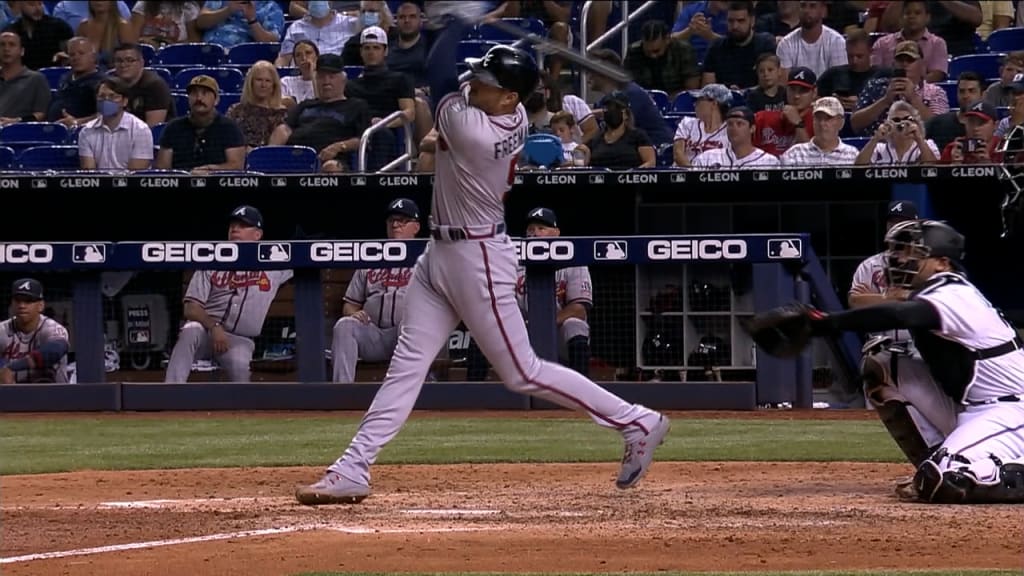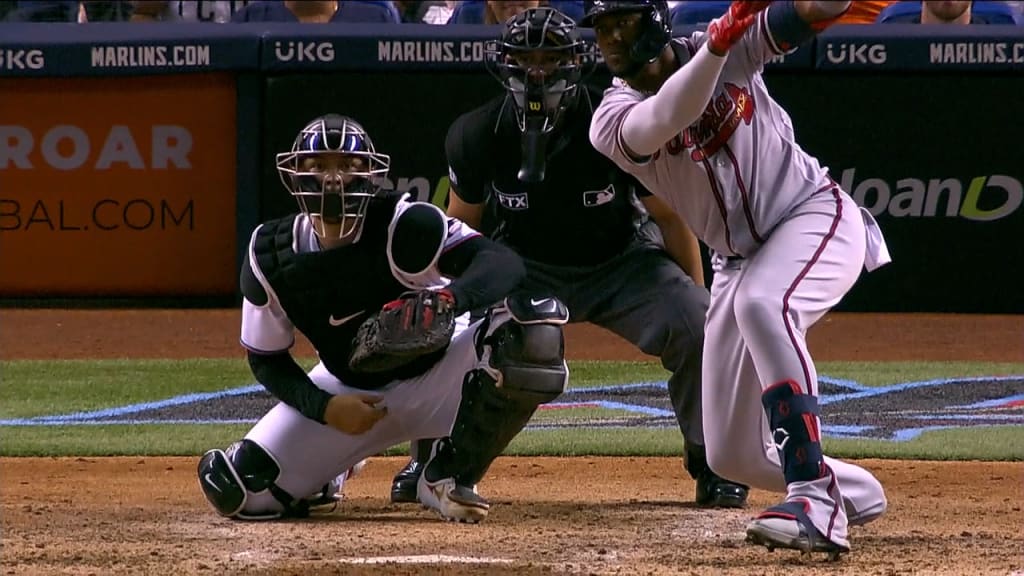How Braves' bats have thrived without Acuña
This browser does not support the video element.
It was easy to write off the Braves when National League MVP candidate Ronald Acuña Jr. tore the ACL in his right knee on July 10. Atlanta was a .500 team even with Acuña, one of the most dynamic players in the game. But somehow, the Braves’ offense has gotten better since Acuña’s injury.
In its first 88 games this season, the team averaged 4.73 runs per game. Over 33 games since Acuña went down, the Braves are averaging 5.53 runs per game, one of the highest figures in MLB.
Highest runs per game average since July 11
Rays: 6.15
Brewers: 5.61
Reds: 5.59
Braves: 5.53
Dodgers: 5.28
Through Aug. 19
In that same span, the Braves’ chief competitors for the National League East title, the Phillies and Mets, have averaged 4.18 and 3.86 runs per game, respectively.
Atlanta has scored 6.47 runs per game during a 13-2 stretch dating back to Aug. 3. The Braves have surged into first place and entered Friday with a 72.6% chance of making the postseason, according to FanGraphs’ playoff odds, compared to 8.7% the day of Acuña’s season-ending injury.
Here’s how Atlanta’s offense has improved despite the loss of its superstar outfielder. (Stats below are through Thursday.)
Trade Deadline adds
To their credit, the Braves didn’t fold up shop when Acuña hurt his knee. There was some thought the team could opt to sell at the Trade Deadline. Instead, the Braves' front office went in the other direction, making a trade with the Cubs for outfielder Joc Pederson on July 15, then acquiring three more outfielders -- Jorge Soler, Adam Duvall and Eddie Rosario -- on July 30.
Rosario hasn’t made his Braves debut yet due to an abdominal injury, but the other three have done their part to help Atlanta’s offense.
Pederson (107 OPS+), Soler (107 OPS+) and Duvall (102 OPS+) all have performed slightly above the MLB average since joining the Braves.
This browser does not support the video element.
The Braves’ trade for veteran catcher Stephen Vogt hasn’t worked out, but that’s less of a concern since Travis d'Arnaud returned from the injured list last week after missing 86 games due to a torn ligament in his left thumb. In his first five games back, d’Arnaud went 5-for-21 (.238) with a homer, two doubles, four walks, four RBIs and an .836 OPS.
MVP Freddie returns
Freddie Freeman's slash stats (.274/.381/.489) before the All-Star break weren’t close to those he put up during his MVP season a year ago (.341/.462/.640), although a closer look reveals he was one of the unluckier hitters in baseball.
Among hitters with at least 250 plate appearances in the first half, Freeman’s 32-point “unlucky gap” between his .274 batting average and .306 expected BA (based on quality of contact and strikeouts) was the eighth largest, and the 82-point gap between his .489 slugging percentage and .571 .xSLG was the fourth largest.
Since the All-Star break, the first baseman not only has continued to mash but also has experienced better fortune. Freeman has a .336 xBA and a .566 xSLG in the second half, and he’s recorded a .378/.449/.605 slash line.
This browser does not support the video element.
Freeman, who can become a free agent after 2021, hit for the cycle for the second time in his career Wednesday against the Marlins, helping the Braves pull off an 11-9 victory.
Improvements from supporting cast
This is arguably the biggest reason the Braves have thrived despite the loss of Acuña, even more so than the team’s Deadline additions and Freeman’s improved production.
Even with the way Freeman is performing, the Braves wouldn’t be where they are right now without help from the supporting cast, specifically third baseman Austin Riley and shortstop Dansby Swanson, whose performances since the All-Star break have far exceeded what they did in the first half.
This browser does not support the video element.
Riley has a 1.109 OPS in the second half (.826 in the first half), which ranks seventh among hitters with at least 100 plate appearances in that span. Freeman’s 1.054 mark is ninth, while Swanson ranks 25th at .945 (.755 in first half).
Riley’s second-half success has been spurred by an increase in his quality of contact.
The 24-year-old has produced a hard-hit (95+ mph exit velocity) fly ball or line drive on 35.4% of his batted balls since the All-Star break, up from 30.6% previously.
Riley’s sweet-spot rate -- the percentage of batted balls hit in the launch-angle sweet-spot zone from 8-32 degrees -- is 41.7% in the second half, compared to 33.3% in the first.
Why is this a big deal? Because Riley owns a .580 average and a 1.520 slugging percentage on hard-hit balls in the air this season, and he’s hitting .664 with a 1.336 slugging percentage on sweet-spot contact.
Swanson’s improvements, meanwhile, have more to do with the quantity of contact the shortstop is producing.
Before the All-Star break, the 27-year-old whiffed on 30.9% of his swings, well above the 2021 MLB average of 26.1%. Since the break, his whiff rate has dropped to 21.2%, and he’s struck out in 15% of his plate appearances, compared to 28.5% previously.
While Swanson’s hard-hit rate is actually down more than four percentage points since the All-Star break, his hard-hit rate on a per-swing basis is up from 15.2% to 19.9% -- the eighth-highest second-half figure among batters with at least 200 swings.
This browser does not support the video element.
There’s also second baseman Ozzie Albies, who has a .333 average and a 1.062 OPS with men on base in the second half. The 24-year-old leads the team with 84 RBIs -- 23 of them coming since the break.
Atlanta’s pitching certainly deserves some credit for the team’s standing as well, as the club’s staff has a 3.56 ERA in the second half, down from 4.27 in the first. But the team's pitching turnaround is not nearly as surprising as its offensive success in the wake of an injury that threatened to sink its season.

